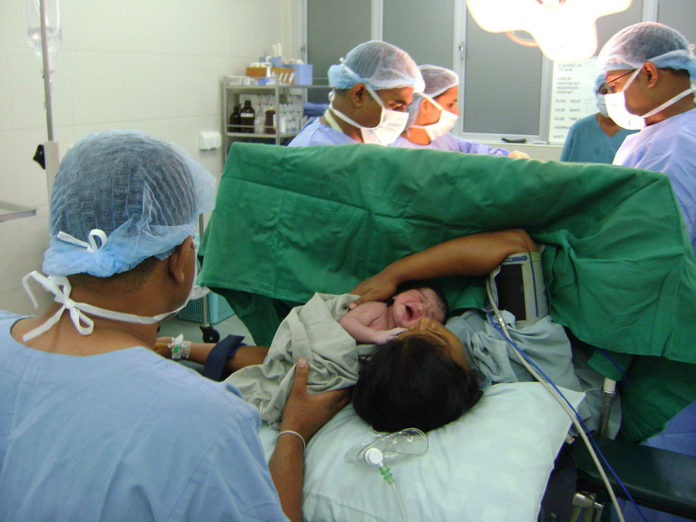India remains below global average but Caesarean sections disproportionately high in the private sector
Globally, the number of babies born through caesarean section (C-section) almost doubled between 2000 and 2015 – from 12% to 21% of all births.
According to a Series of three papers published in The Lancet and launched at the International Federation of Gynecology and Obstetrics (FIGO) World Congress in Brazil, the surgery that can save lives, yet remains unavailable for many.
Series authors estimate that more than one in four countries in 2015 had lower levels (28%, 47/169 countries) of C-Sections than medically recommended. However most countries used C-section above the recommended level (63%, 106/169 countries). In at least 15 countries C-section use exceeds 40%.
In India, according to data from the National Family Health Survey IV, nationally just 17.2 percent births in 2015-16 happened by C-section. However 40.9 percent of all births in a private facility happened using surgical means – a disproportionately high figure.
In India, in 2015-16 just 17.2 percent births happened by C-section. However 40.9 percent of all births in a private facility happened using surgical means – a disproportionately high figure.
C-section is a life-saving intervention for women and newborns when complications occur, such as bleeding, foetal distress, hypertensive disease, and babies in abnormal position. But, the surgery is not without risk for mother and child, and is associated with complications in future births.
It is estimated that 10-15% of births medically require a C-section due to complications, suggesting that average C-section use should lie between these levels.
“Pregnancy and labour are normal processes, which occur safely in most cases. The large increases in C-section use – mostly in richer settings for non-medical purposes – are concerning because of the associated risks for women and children. C-sections can create complications and side effects for mothers and babies, and we call on healthcare professionals, hospitals, funders, women and families to only intervene in this way when it is medically required,” says Series lead Dr Marleen Temmerman, Aga Khan University, Kenya and Ghent University, Belgium. “In cases where complications do occur, C-sections save lives, and we must increase accessibility in poorer regions, making C-sections universally available, but we should not overuse them.” [2]
The Series tracks trends in C-section use globally and in nine regions based on data from 169 countries from WHO and UNICEF databases. Globally, C-section use has increased by 3.7% each year between 2000-2015 – rising from 12% of live births (16 million of 131.9 million) in 2000, to 21% of live births (29.7 million of 140.6 million) in 2015.
However, the pace of change varied substantially between regions. The South Asia region has seen the most rapid increase in use (6.1% per year), with C-section being underused in 2000 but being overused by 2015 (increasing from 7.2% of births via C-section to 18.1%). However, improvements have been slow across sub-Saharan Africa (around 2% per year), where C-section use has remained low (increasing from 3% to 4.1% of births in West and Central Africa, and from 4.6% to 6.2% in Eastern and Southern Africa).


